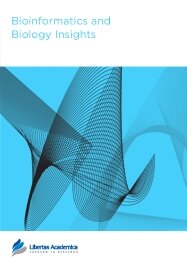

Publication Date: 23 Jan 2013
Type: Original Research
Journal: Bioinformatics and Biology Insights
Citation: Bioinformatics and Biology Insights :7 35-54
doi: 10.4137/BBI.S10053

In this study, we investigated the modalities of coding open reading frame (cORF) classification of expressed sequence tags (EST) by using the universal feature method (UFM). The UFM algorithm is based on the scoring of purine bias (Rrr) and stop codon frequencies. UFM classifies ORFs as coding or non-coding through a score based on 5 factors: (i) stop codon frequency; (ii) the product of the probabilities of purines occurring in the three positions of nucleotide triplets; (iii) the product of the probabilities of Cytosine (C), Guanine (G), and Adenine (A) occurring in the 1st, 2nd, and 3rd positions of triplets, respectively; (iv) the probabilities of a G occurring in the 1st and 2nd positions of triplets; and (v) the probabilities of a T occurring in the 1st and an A in the 2nd position of triplets. Because UFM is based on primary determinants of coding sequences that are conserved throughout the biosphere, it is suitable for cORF classification of any sequence in eukaryote transcriptomes without prior knowledge. Considering the protein sequences of the Protein Data Bank (RCSB PDB or more simply PDB) as a reference, we found that UFM classifies cORFs of $200 bp (if the coding strand is known) and cORFs of $300 bp (if the coding strand is unknown), and releases them in their coding strand and coding frame, which allows their automatic translation into protein sequences with a success rate equal to or higher than 95%. We first established the statistical parameters of UFM using ESTs from Plasmodium falciparum, Arabidopsis thaliana, Oryza sativa, Zea mays, Drosophila melanogaster, Homo sapiens and Chlamydomonas reinhardtii in reference to the protein sequences of PDB. Second, we showed that the success rate of cORF classification using UFM is expected to apply to approximately 95% of higher eukaryote genes that encode for proteins. Third, we used UFM in combination with CAP3 to assemble large EST samples into cORFs that we used to analyze transcriptome phenotypes in rice, maize, and humans. We discuss the error rate and the interference of noisy sequences such as pseudogenes, transposons, and retrotransposons. This method is suitable for rapid cORF extraction from transcriptome data and allows correct description of the genome phenotypes of plant genomes without prior knowledge. Additional care is necessary when addressing the human transcriptome due to the interference caused by large amounts of noisy sequences. UFM can be regarded as a low complexity tool for prior knowledge extraction concerning the coding fraction of the transcriptome of any eukaryote. Due to its low level of complexity, UFM is also very robust to variations of codon usage.
PDF (2.29 MB PDF FORMAT)
RIS citation (ENDNOTE, REFERENCE MANAGER, PROCITE, REFWORKS)
BibTex citation (BIBDESK, LATEX)
XML
PMC HTML

Recently we have published a review on sRNA prediction in bacteria. Submission and processing is fast and very fair in Bioinformatics and Biology Insights. I have received emails at every stage of the review process until decision making. The experts' comments and suggestions has helped us to improve the manuscript. Because of the indexing and high visibility of the article in BBI we expect to receive a high number of citations. ...
Facebook Google+ Twitter
Pinterest Tumblr YouTube